Flughafen Berlin-Tegel
Drittel Books, 2023, ISBN 978-3-9818866-4-1

On 8 November 2020 the last commercial aircraft departed from Berlin Tegel Airport. It left an emptiness in its wake; but also a utopian space in which the idea, the architecture and the history of the site continue to resonate. In this respect, Berlin Tegel was unlike the major international hubs in Shanghai, Denver, London and Frankfurt am Main which, with their never-ending agglo-merations of departure lounges, check-in counters, retractable barriers, escalators and shopping facilities, hardly differ from oneanother. As an airport, it wasn’t merely a transit zone of the globalised era; it was also a place with a particular social and historical significance.
With an accompanying essay by Maxie Fischer
review Harpers Bazaar
review Wallpaper
review Deeds
Order here
Berlin
Drittel Books, 2021, ISBN 978-3-9818866-3-4

Berlin presents a portrait of a city many of us thought we already knew. In an extraordinarily intimate way, his photographs lay bare the radical upheavals, discords and new beginnings that have shaped Germany’s capital so uniquely.
Over the course of six years, Gehrke has created a pictorial portrait of a city that finds a balance between built and grown space, between locations that are undefined and those are loaded with significance. Berlin is a personal and in equal measure artistic exploration of this multilayered metropolis that more or less became the city it is by accident.
With an accompanying essay by Florian Heilmeyer
review American Suburb X
review taz
review monopol
review baunetz
review spiegel
Order here
Landeszentralbank, 2000-20016, Meiningen
Drittel Books, 2017, ISBN 978-3-9818866-0-3
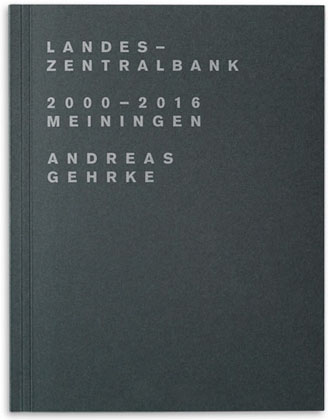
Completed in 2000, Hans Kollhoff’s post-modern fortress housed the Landeszentralbank’s Head Office in the state of Thuringia until 2016, when it was closed to be repurposed for its second functional life – this time as a storage facility for contemporary art. Gehrke’s photographs capture the complex in an interim phase, showing anew the spaces and surfaces of a building not immediately discernible beneath the weight of its monumental and technical qualities. In doing so, the work serves not just as a portrait of a building lived according to its originally intended function, but also as a reading of the space that speaks to its life to come.
This architectural portrait of the vast Landeszentralbank in Meiningen echoes the visual language and format that characterises Andreas Gehrke’s acclaimed trilogy depicting vacant post-war modernist buildings in Germany, although the nature of this book’s subject represents a departure from that series.
With an essay by Terence Riley, internationally renowned critic and former Philip Johnson Chief Curator of Architecture and Design at MoMA in New York.
Order here
Brandenburg
Drittel Books, 2017, ISBN 978-3-9815735-8-9
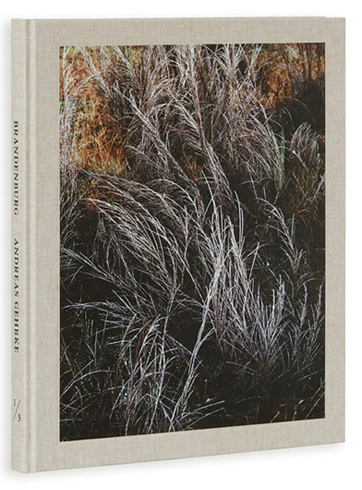
Brandenburg is a considered portrait of the sparsely populated state that encircles Berlin. A region that has been described as bleak, austere and unforgiving, Gehrke’s Brandenburg is marked by moments of incongruity. Drawn to the undefined, the seemingly desolate, he depicts places characterised by transition, absence and indeterminacy. For over six years Gehrke worked on this project. Consistently renouncing notions of pure documentary photography, his images never make outward reference to historical shifts and processes. Instead they form a series of subtle allusions to the structural and social changes that have befallen Brandenburg in recent decades.
With this publication, Andreas Gehrke has produced a document that transcends the realm of temporality. Brandenburg isn’t a depiction of ‘home’: it examines the aesthetic identity of the region from a detached, analytical perspective.
Complemented by an essay on landscape by the Swiss sociologist and founder of promenadology, Lucius Burckhardt.
review ZEIT online (ger)
review PNN (ger)
review Architectural Digest (ger)
Order here
IBM Campus, 1972-2009, Stuttgart-Vaihingen
Drittel Books, 2013, ISBN 978-3-9815735-1-0
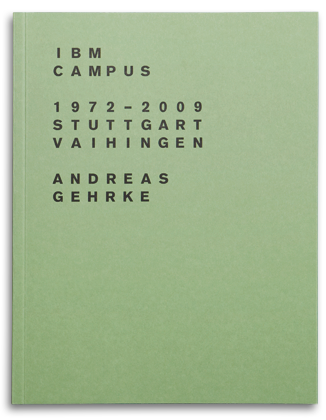
Part of photographer Andreas Gehrke’s powerful narrative series on dormant modernist buildings. Vacant work spaces that once hosted business enterprises playing a significant role in shaping the political, social and economic face of post-war Germany.
Designed by Germany’s most celebrated post-war modernist architect Egon Eiermann, this campus complex near Stuttgart was home to the Germany offices of US technology and consulting giant IBM from 1972 to 2009.
Quelle Versand, 1956-2009, Nürnberg
Drittel Books, 2013, ISBN 978-3-9815735-2-7
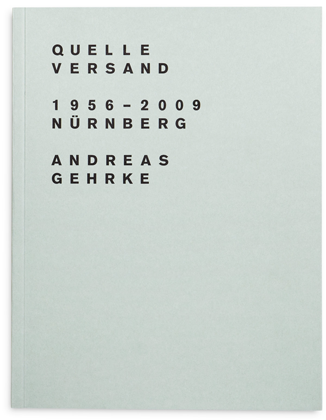
Part of photographer Andreas Gehrke’s powerful narrative series on dormant modernist buildings. Vacant work spaces that once hosted business enterprises playing a significant role in shaping the political, social and economic face of post-war Germany.
Founded in 1927, Quelle was Germany’s biggest mail order catalogue company and one of its largest department store chains. This purpose-built building by former Bauhaus student Ernst Neufert in Nuremberg was Quelle’s mail order HQ from 1956 until the company’s insolvency in 2009.
Der Spiegel, 1969-2011, Hamburg, Brandstwiete
Der Spiegel, 1995-2011, Hamburg, Dovenfleet
Drittel Books, 2013, ISBN 978-3-9815735-0-3
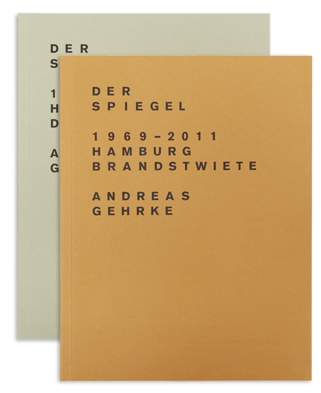
Download pressrelease (engl.)
review baunetz (dt)
review uncube magazine (eng)
review Kasseler Fotoforum (dt)
review metropolis magazine (eng)
review Architectural Digest (dt)
TOPOGRAPHIE
Distanz Verlag, 2011, ISBN 978-3-942405-30-0

Do places hold memories?
This seemingly innocent copse of Robinia, a patch of waste landscape colonised by nature right in the heart of Berlin, has born the brunt of history and been neglected by it in turn. Observers who know the site’s background find their view prejudiced by the knowledge of what happened here: Between 1933 and 1945, this plot of land was at the heart of the Third Reich. It was home to the headquarters of the Gestapo, the SS, and the Reich Security Head Office. After World War II, the area gradually turned into a piece of abandoned wasteland, and from 1961 the Berlin Wall ran along the northern edge of the then levelled terrain. In 1987, the site was “rediscovered”, vestiges of the buildings were excavated, and the area was landscaped and opened to the public with the inauguration of the exhibition “Topography of Terror” which documents the atrocities that were directed from this very place nearly eighty years ago.
With essays by Klaus Hesse, curator, Topography of Terror Foundation
Berlin, and Thomas Seelig, curator, Fotomuseum Winterthur
Download pressrelease (engl.)
Download Pressemitteilung (deut.)
review Photoeye
review Monopol
review taz
review Kasseler Fotoforum
Contributions and other books
MOVEMENT METER FOR LERNACKEN, Studio Olafur Eliasson, Berlin 2002
URBANE REALITÄTEN-FOKUS ISTANBUL, Martin-Gropius-Bau / Künstlerhaus Bethanien, Berlin 2005
INTO THE NATURE, Gestalten Verlag, Berlin 2006
MADE IN GERMANY, Edition Braus, 2008
BOROS COLLECTION, BUNKER BERLIN #1, Hatje Cantz, Ostfildern, 2009
AORTICA, The Frankfurt Issue, 2010
SAUERBRUCH HUTTON, COLOUR IN ARCHITECTURE, Distanz Verlag, Berlin, 2012
BOROS COLLECTION, BUNKER BERLIN #2, Distanz, Berlin, 2013
ERNST NEUFERT PETER NEUFERT, Hatje Cantz, Ostfildern, 2014
ARCHITEKTUR UND HANDWERK, Jovis, Berlin, 2015
OLAFUR ELIASSON / SAMMLUNG BOROS, Distanz, Berlin, 2015
BLAURAUM EN DÉTAIL, Berlin, 2017
BOROS COLLECTION, BUNKER BERLIN #3, Distanz, Berlin, 2017
THE PUBLIC PRIVATE HOUSE, Modern Athens and its Polykatoikia, Park Books, 2018
PER KIRKEBY - BUILDING AND PAINTING, Distanz, Berlin, 2019
LAND'S END - The Topography of Terror Site As Reflected in Contemporary Photography, Drittel Books, 2019
DAVID CHIPPERFIELD ARCHITECTS BERLIN UND DAS KUNSTHAUS ZÜRICH, Scheidegger & Spiess, Zürich, 2021
BOROS COLLECTION, BUNKER BERLIN #4, Distanz, Berlin, 2022
